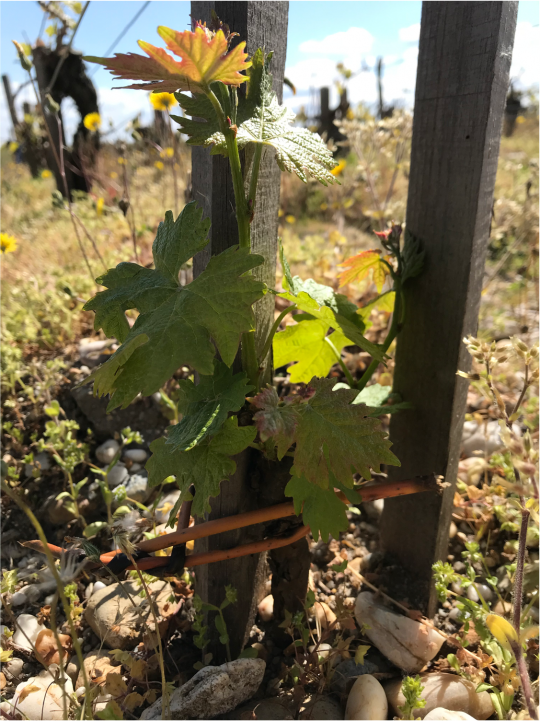Available equipment
The protection of the young vines is often essential for healthy growth. For this purpose, it is possible to use covers or sleeves. They are very effective against rabbits, but they can be harmful because they create a greenhouse effect in hot weather. Moreover, grass can grow inside the sleeves unnoticed. They can also provide ideal shelter for snails who then feed on the buds. Translucent covers can reduce the greenhouse effect and ensure the young vine is easily visible, however, it may be necessary to remove the sleeves until temperatures become more tolerable. Protective netting is also available.
The young plants must be staked: this can be a single stake or double stakes attached to the supporting wire See section on: Planting.
Château Latour does not use sleeves because the young vines are not vulnerable to damage caused by animals. However, double stakes protect the vines during tillage. This is also the case at Domaine d'Eugénie and Clos de Tart.

